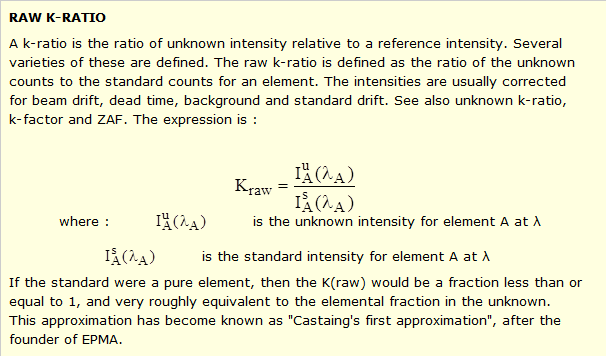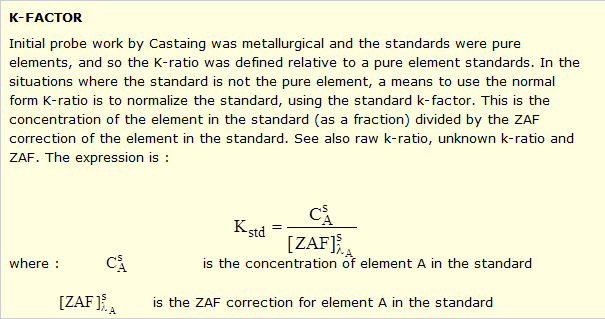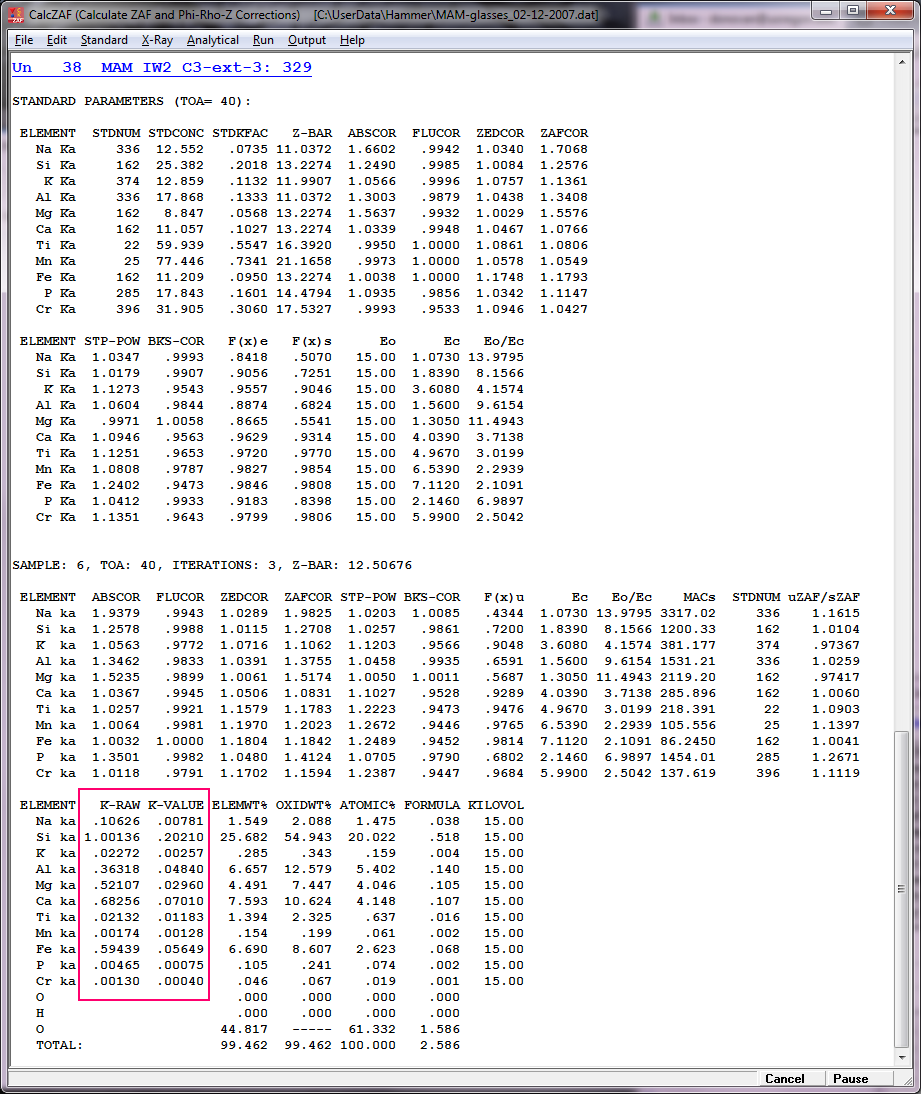I thought I would post a short primer on the matrix correction equations utilized in EPMA.
We begin with the so called "raw" k-ratio which is the unknown intensity divided by the standard intensity. Normally, both intensities are corrected for all measurement effects such as time, beam current, background, etc:

The above image is from the glossary in the Probe for EPMA help file (which is also distributed with the CalcZAF EPMA utility). To download CalcZAF, see the first post in this topic. This ratio should be reproducible when two materials (unknown and standard) are measured on any instrument with the same electron beam energy and detector takeoff angle (hence the need for globally agreed upon standard compositions!).
Next we examine the standard k-factor term as shown here:

This is to deal with standards that are *not* a pure element. In the case of a pure element standard both the concentration and the matrix correction term [ZAF] are equal to 1 and hence have no effect on the raw k-ratio.
Note also that the term [ZAF], refers to *any* matrix correction scheme including pr(z) methods. The difference in pr(z) methods is that the absorption (A) and stopping power and backscatter terms (Z), are treated in a single analytical expression. The fluorescence factor (F) is treated separately. Alpha factor methods would utilize the so called "beta" term. But we simply use the [ZAF] term to describe them all.
When the raw k-ratio and the standard k-factor are combined with the unknown matrix correction term, we have the full expression as shown here:

which is iteratively calculated until everything converges.
In the CalcZAF application, the following output shows the raw k-ratio (K-RAW) and the elemental k-ratio (K_VALUE), the latter which is the k-ratio if a pure element standard were utilized:
